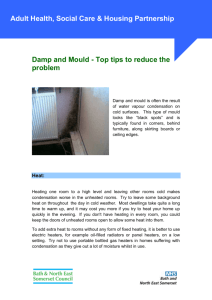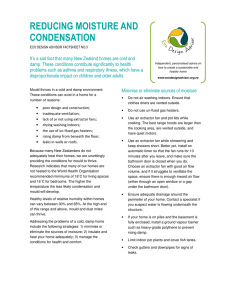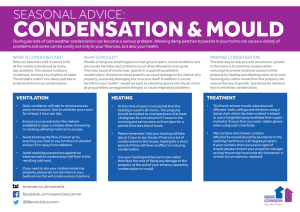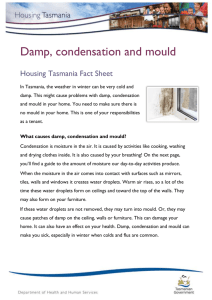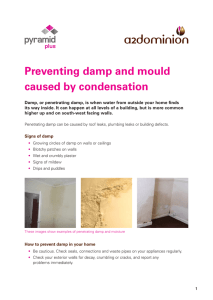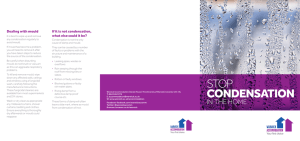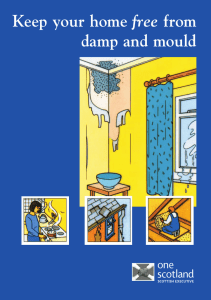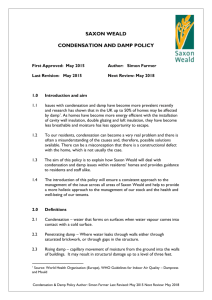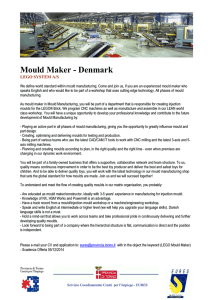Have a look at how you can help reduce condensation, damp and
advertisement
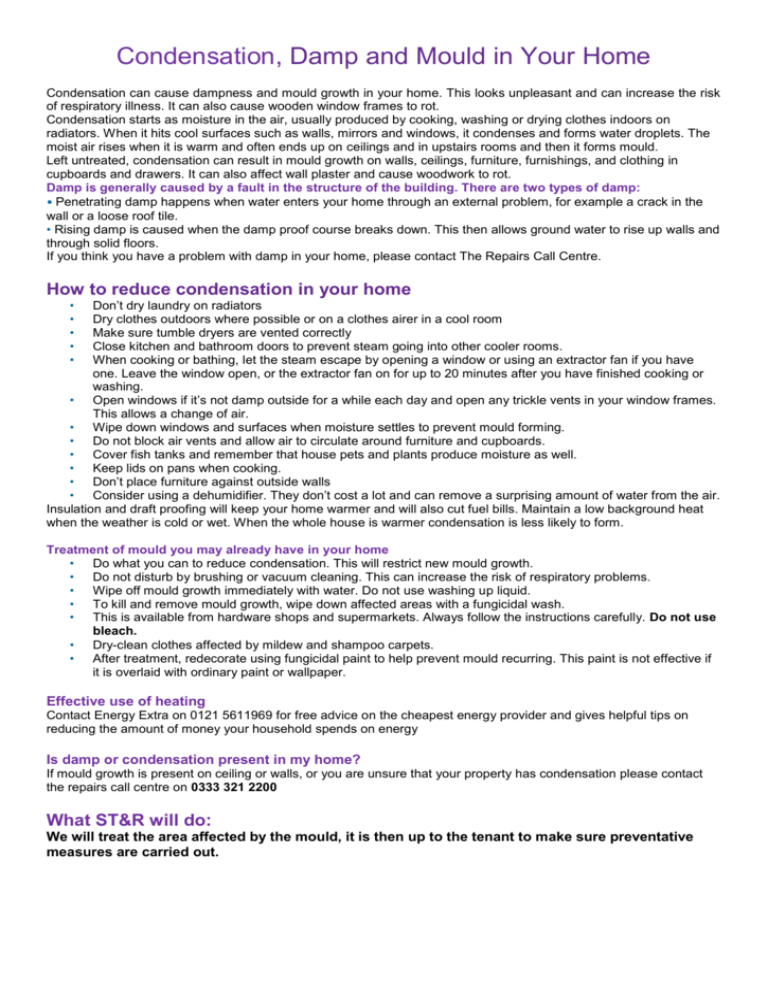
Condensation, Damp and Mould in Your Home Condensation can cause dampness and mould growth in your home. This looks unpleasant and can increase the risk of respiratory illness. It can also cause wooden window frames to rot. Condensation starts as moisture in the air, usually produced by cooking, washing or drying clothes indoors on radiators. When it hits cool surfaces such as walls, mirrors and windows, it condenses and forms water droplets. The moist air rises when it is warm and often ends up on ceilings and in upstairs rooms and then it forms mould. Left untreated, condensation can result in mould growth on walls, ceilings, furniture, furnishings, and clothing in cupboards and drawers. It can also affect wall plaster and cause woodwork to rot. Damp is generally caused by a fault in the structure of the building. There are two types of damp: • Penetrating damp happens when water enters your home through an external problem, for example a crack in the wall or a loose roof tile. • Rising damp is caused when the damp proof course breaks down. This then allows ground water to rise up walls and through solid floors. If you think you have a problem with damp in your home, please contact The Repairs Call Centre. How to reduce condensation in your home • • • • • Don’t dry laundry on radiators Dry clothes outdoors where possible or on a clothes airer in a cool room Make sure tumble dryers are vented correctly Close kitchen and bathroom doors to prevent steam going into other cooler rooms. When cooking or bathing, let the steam escape by opening a window or using an extractor fan if you have one. Leave the window open, or the extractor fan on for up to 20 minutes after you have finished cooking or washing. • Open windows if it’s not damp outside for a while each day and open any trickle vents in your window frames. This allows a change of air. • Wipe down windows and surfaces when moisture settles to prevent mould forming. • Do not block air vents and allow air to circulate around furniture and cupboards. • Cover fish tanks and remember that house pets and plants produce moisture as well. • Keep lids on pans when cooking. • Don’t place furniture against outside walls • Consider using a dehumidifier. They don’t cost a lot and can remove a surprising amount of water from the air. Insulation and draft proofing will keep your home warmer and will also cut fuel bills. Maintain a low background heat when the weather is cold or wet. When the whole house is warmer condensation is less likely to form. Treatment of mould you may already have in your home • Do what you can to reduce condensation. This will restrict new mould growth. • Do not disturb by brushing or vacuum cleaning. This can increase the risk of respiratory problems. • Wipe off mould growth immediately with water. Do not use washing up liquid. • To kill and remove mould growth, wipe down affected areas with a fungicidal wash. • This is available from hardware shops and supermarkets. Always follow the instructions carefully. Do not use bleach. • Dry-clean clothes affected by mildew and shampoo carpets. • After treatment, redecorate using fungicidal paint to help prevent mould recurring. This paint is not effective if it is overlaid with ordinary paint or wallpaper. Effective use of heating Contact Energy Extra on 0121 5611969 for free advice on the cheapest energy provider and gives helpful tips on reducing the amount of money your household spends on energy Is damp or condensation present in my home? If mould growth is present on ceiling or walls, or you are unsure that your property has condensation please contact the repairs call centre on 0333 321 2200 What ST&R will do: We will treat the area affected by the mould, it is then up to the tenant to make sure preventative measures are carried out.
